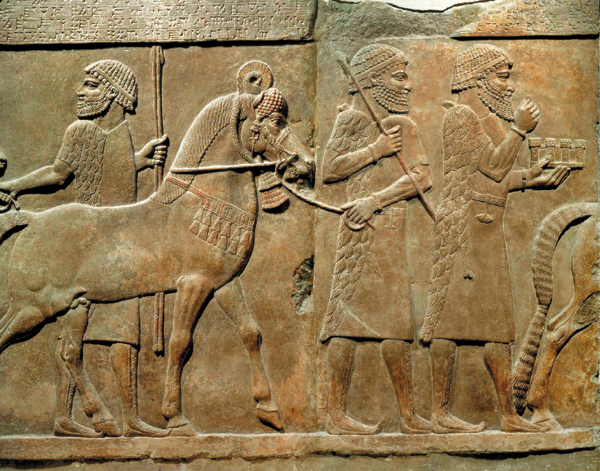“I besieged and conquered Samaria and led away as booty 27,290 inhabitants of it. I formed from among them a contingent of 50 chariots and made those remaining assume their (present) statuses.”
– Khorsabad Annals
The king of Assyria brought people from Babylon, Cuthah, Avva, Hamath, and Sepharvaim, and placed them in the cities of Samaria in place of the people of Israel; they took possession of Samaria, and settle in its cities (2 Kings 17.24).
Sargon II succeeded Shalmaneser V as king of Assyria during or shortly after the siege of Samaria, which is described in 2 Kings 17-1-6. Sargon nevertheless took credit for the capture of Samaria and the final elimination of the northern kingdom of Israel. One a stone stab found at Kalah he called himself the “subduer of the land of Judah, whose place is far off” (No. 24, c. 716 BCE).
Following the lead of his predecessor Tiglath-pileser III, who earlier depopulated the annexed region of Naphtali (2 Kings 15-29), Sargon ordered the forced relocation of the inhabitants of conquered nations. The Israelite exiles he assigned to various tasks in Syria and the Assyrian heartland. Most became laborers, but other exiles continued to practice their trades, such as smithing, while other were empressed into Assyrian military service. Sargon’s mass deportation of Israelites gave rise to the legend of the ten lost tribes of Israel, who likely merely assimilated into Assyrian culture. A major component of the Assyrian mass deportation strategy was the relocation of settlers to the newly depopulated areas. Sargon mentions relocating Syrians, Arabs and other peoples to the region of Samaria- “I crushed the tribes of Tamud, Ibadid, Marsimanu, and Haiapa, the Arabs who live, far away, in the desert (and) who know neither overseers nor officials and who had not (yet) brought their tribute to any king. I deported their survivors and settled (them) in Samaria.” (ANET, 286).
The present-day community of Samaritan Jews living on Mount Gerizim in Nablus (Shechem) maintains that its members are descended from Israelite clans that escaped deportation. Others argue that they might be descendants of converts to Judaism relocated to the Samaria region by Sargon.
Prior to the discovery of the Khorsabad Annals in 1847, Sargon was known only from the Book of Isaiah 20-1 – “In the year that Tartan came into Ashdod, when Sargon the king of Assyria sent him, and he fought against Ashdod and took it.” Scholars were convinced that there had not been an Assyrian king named Sargon and that Isaiah was referring to an alias of another king.

